Science-based report
The foundation of State of the Salmonids II: Fish in Hot Water is based on 32 rigorously researched, peer-reviewed biological and ecological species accounts prepared by Dr. Peter B. Moyle, Patrick J. Samuel, and Dr. Robert A. Lusardi. Each account has been externally reviewed and is published as Salmon, Steelhead, and Trout in California: Status of Emblematic Fishes, Second Edition.
This is the second State of the Salmonids report, the first of which was published in 2008. This second edition is timely. During the writing of the first edition of the State of the Salmonids report in 2008, the commercial salmon fishery was closed due to low adult returns. Each year since then, the fishery has been restricted or constrained in some way.
At the writing of the 2017 report, the commercial salmon fishery is again closed for the season. The northern part of the state is emerging from historic drought (2012-2016), which saw significant negative impacts on salmonid populations and juvenile survival.
Further, new information, especially in the form of federal and state agency reports, and genetic and life history research that was not available before have been published, helping to paint a clearer picture of the true plight of California’s salmonid populations. While California’s climate, precipitation patterns, and trends in salmonids has changed, monitoring efforts, especially for species not listed under the Endangered Species Act, remain insufficient.
To view the full scientific report, click here.
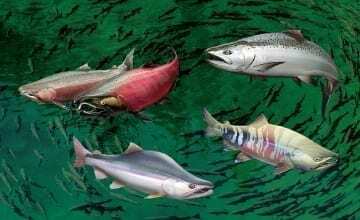
Loss of California’s salmonids means a global loss of diversity.
In 2015, our partners at Trout Unlimited released the State of the Trout report, which provided a broad overview of the status, trends, and threats facing the trout species across the United States. While that report provided a general overview, this report dives more deeply into the status and trends facing all of California’s salmonids at the southern edge of their range.
Status reviews are needed more frequently to alert managers and others on changes in the trends of the salmonids across California.
While considerable efforts were made to compare the results of this second edition with the first edition of the State of the Salmonids report (2008), the level of information available for most species has greatly improved, as has our understanding of the threats they face and their impacts on salmonid populations. As a result, our current effort uses vastly improved metrics to portray what we feel is a considerable improvement in the quality of the status assessments for each species.
This report will alert agencies, stakeholders, and the public to the potential extent of the problem with declining salmon, steelhead, trout and their waters in order to encourage strategic conservation, especially in the face of climate change. In fact, the decline of California salmonids is a problem of national significance. Because of its complexity, California produces conditions similar to conditions throughout the range of salmonids, but its southern location and extreme development of water resources means the state’s problems presage those of other areas. Loss of California’s salmonids means a global loss of diversity.





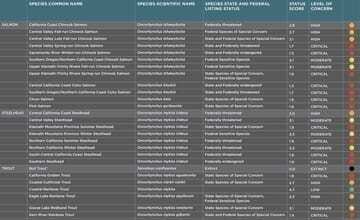

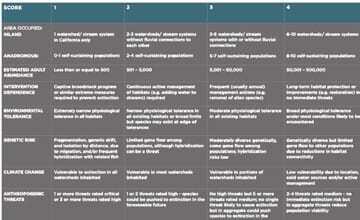
 Dams block access to historical spawning and rearing habitats. Downstream, dams alter the timing, frequency, duration, magnitude, and rate of change of flows decreasing habitat quality and survival.
Dams block access to historical spawning and rearing habitats. Downstream, dams alter the timing, frequency, duration, magnitude, and rate of change of flows decreasing habitat quality and survival.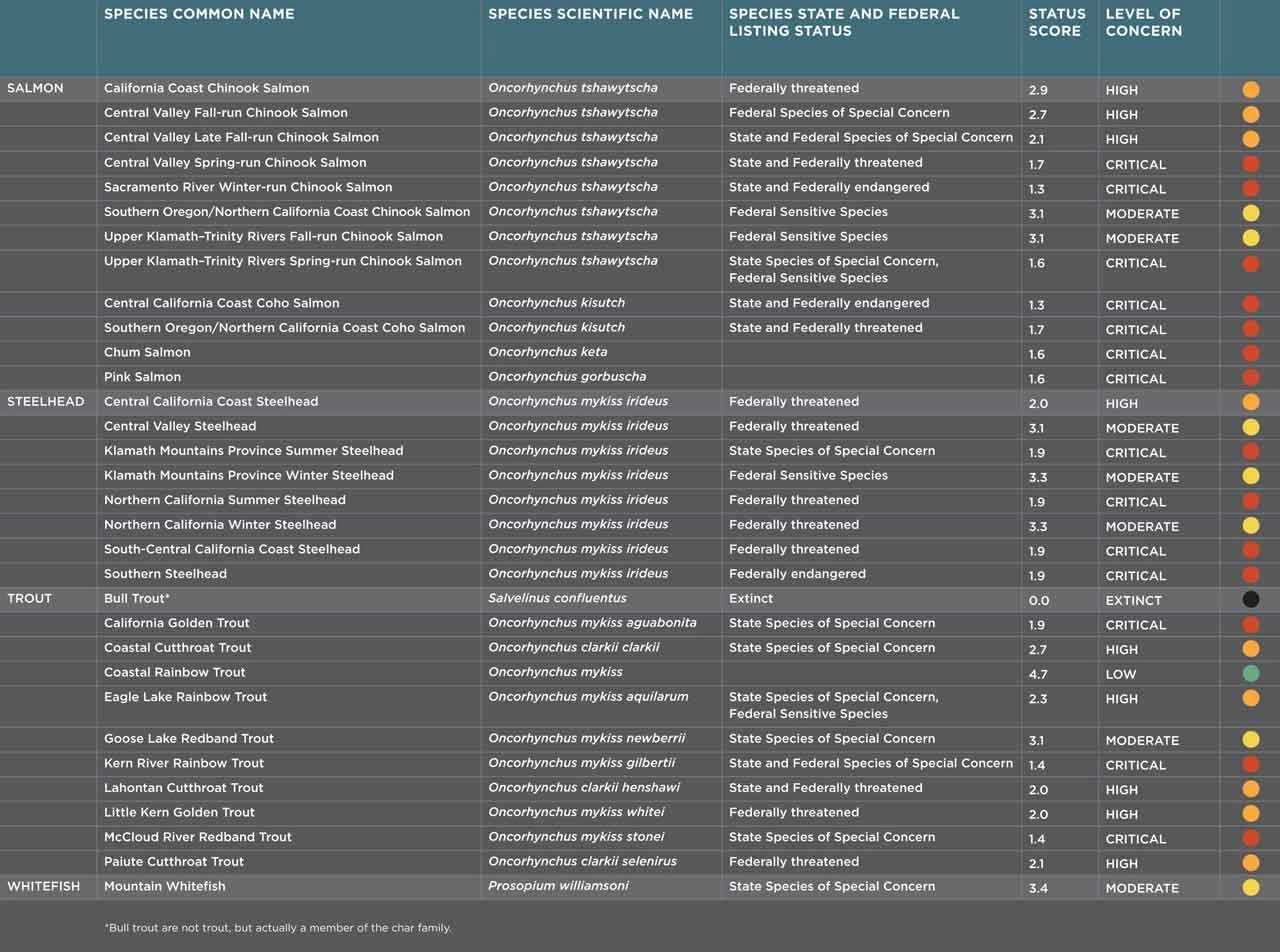
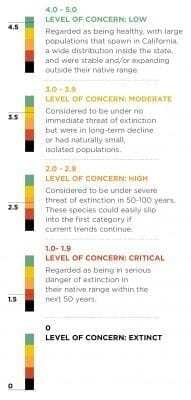

 Human use of streams, lakes, and surrounding watersheds for recreation has greatly increased with population expansion. Boating, swimming, angling, off-road vehicles, ski resorts, golf courses and other activities or land uses can negatively impact salmonid populations and their habitats. The impacts are generally minor; however, concentration of multiple activities in one region or time of year may have cumulative impacts.
Human use of streams, lakes, and surrounding watersheds for recreation has greatly increased with population expansion. Boating, swimming, angling, off-road vehicles, ski resorts, golf courses and other activities or land uses can negatively impact salmonid populations and their habitats. The impacts are generally minor; however, concentration of multiple activities in one region or time of year may have cumulative impacts.













